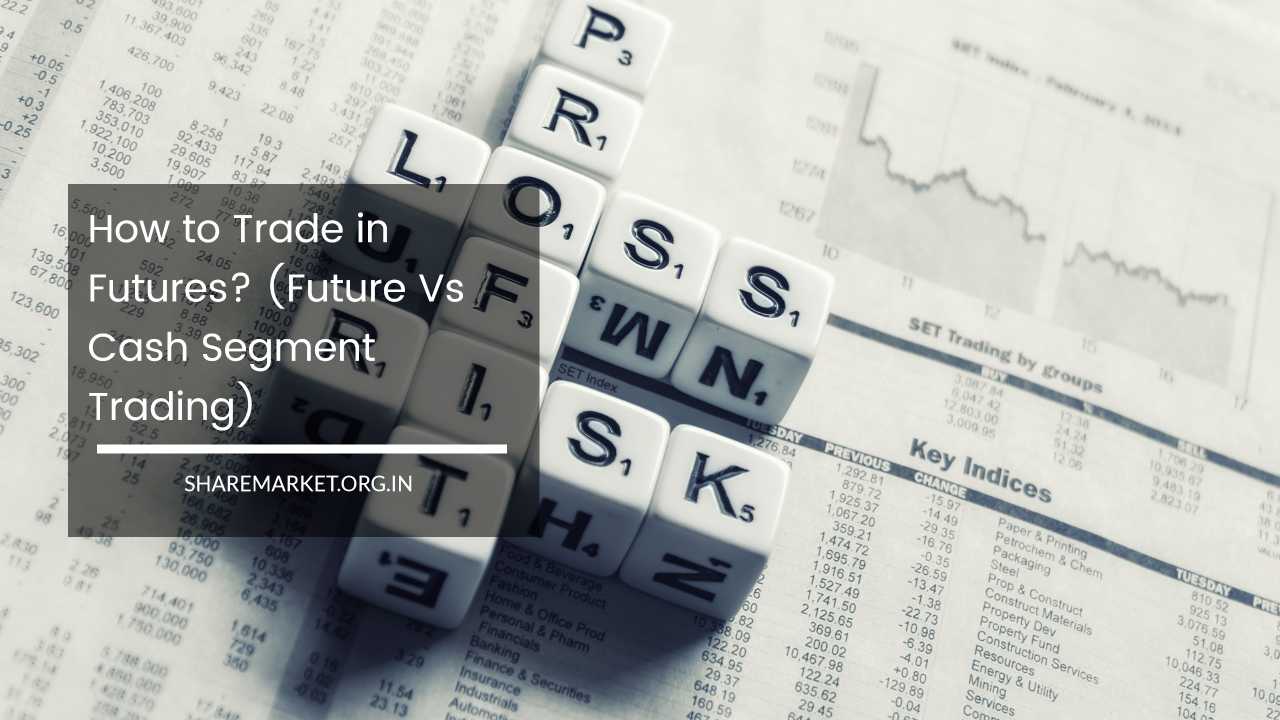How to Trade in Futures? (Future Vs Cash Segment Trading)

Most of the traders still don’t know how to trade in Futures, may be they are not interested, because the risk is more in Futures. Anyways gaining knowledge about Future is not Risk so lets read about How Futures work ?
Buy a contract :
When you buy shares, you can buy any number you please, even if it is just one share. In Futures, you buy a contract which will have a specific lot size depending on the stock.
Let’s say you want to buy an Infosys Futures contract. This will comprise 100 shares. Or, you want to buy a HPCL Futures contract. This will be a lot of 650 shares.
In Futures, you buy a lot. The lot size is set for each futures contract and it differs from stock to stock.
Margin payment :
When you buy a Futures contract, you don’t pay the entire value of the contract but just the margin. This margin amount too is prescribed by the exchange.
Let’s say you buy a HPCL Futures contract. and the price of each HPCL share is Rs 311. This will amount to Rs 2,02,150 (Rs 311 x 650 shares).
You don’t pay the entire amount of Rs 2,02,150. You only pay 15% to 20% of that amount and this is called the margin amount.
The margin depends on what the exchange sets for the day. Based on certain parameters, it declares the margin for each stock.
So the margin for Infosys will vary from, say, HPCL.
Let’s say the margin for the HPCL Futures is 15%. So you end up just paying just Rs 30,322 (not Rs 2,02,150).
How you make or lose money :
You purchased a HPCL Futures contract and the underlying price is Rs 311 per share.
Let’s say, the next day it moves to Rs 312.
The difference is Rs 1 per share (312 – 311)
You get a credit Rs 650 (Rs 1 per share x 650 shares).
The following day, it dips to Rs 310.
The difference is Rs 2 per share (312 – 310)
Since the price has dipped, Rs 1,300 (Rs 2 per share x 650 shares) is debited from your account.
This will go on till you sell the Futures contract or it expires (last Thursday of the month).
So, on a daily basis you make and lose money.
Why Futures are popular No delivery.
There is no delivery :
When you buy in the cash segment (where investors buy and sell any number of shares and hold them in demat accounts), the shares are delivered to you and sent to your demat account.
Over here, there is no delivery so you do not need a demat account.
Lower brokerage :
The brokerage in Futures is much lower. It will be around 0.03% to 0.05% of the transaction. These are the rates given to regular investors. An occasional investor may end up paying up to 0.1% as brokerage.
In the cash segment, the brokerage will be around 0.25% to 0.75%.
Margin payment :
When you buy shares in the cash segment, you have to make the entire payment to your broker. Let’s say you buy 650 HPCL shares for Rs 311 per share. You end up paying Rs 2,02,150.
Within two days, you will have to make the full payment to your broker.
In Futures, you just pay the margin, not the entire amount.
Can effectively short sell :
When you sell shares without owning them, it is known as short selling. You would do so if you believe that the price of the stock is going to drop. This way, you sell it at a higher rate and buy it at a lower rate later.
With Futures, you do not have to square your transaction at the end of the day. You can square the transaction whenever you want or wait till it expires on the last Thursday of the month.
But, in the cash segment, you have to square your transaction by the end of the day, so you can short sell just for a day.
Where the cash segment scores
Price differential :
It is worth noting that the price of the shares in the cash segment is mostly lower than the Futures price.
So, if it is available for Rs 311 in the Futures segment, you should get it for Rs 308 in the cash segment. Though, on occasions it may even be slightly higher.
Tax :
In Futures, you pay a tax of 33% on the your profit.
In equity, it is a flat rate of 10% (short term capital gains) if you sell within a year and no tax if you sell after a year (long term capital gains).
Flexibility in purchases :
In the cash segment, you can pick up however many shares you want starting from just one share.
In Futures, you cannot buy less than the lot size prescribed.
If you want to buy more you can, but they must be in multiples of the lot. So, you can buy one or two contracts.
Risk in Futures is higher :
If you are an investor who wants to buy shares and hold on to it, you should invest in the cash segment.
Since Futures is a trading tool, the risk is also much higher.
Let’s say the shares of Infosys are going at Rs 2,700 per share.
And, you buy 100 shares in the cash segment. You end up paying Rs 2,70,000.
The price dips to Rs 2,200. If you sell the shares at this rate, you make a loss of 18.5%
Now let’s say you purchase an Infosys Futures at the underlying share price being the same.
You pay the 20% margin of Rs 54,000.
Let’s say the price dips to Rs 2,200.
You have to pay out Rs 50,000.
Since you invested only Rs 54,000, you have incurred a loss of 92.5%.
Hence, your losses can be much higher in Futures.
Where can you trade?
All stocks are not permitted for trading in derivatives.
To check the list of stocks available for trading, go onto the National Stock Exchange website. You can also check the Bombay Stock Exchange website to read more about derivatives trading.
But do note, to trade in futures, you will have to approach a broker who is authorised to trade in derivatives.

















